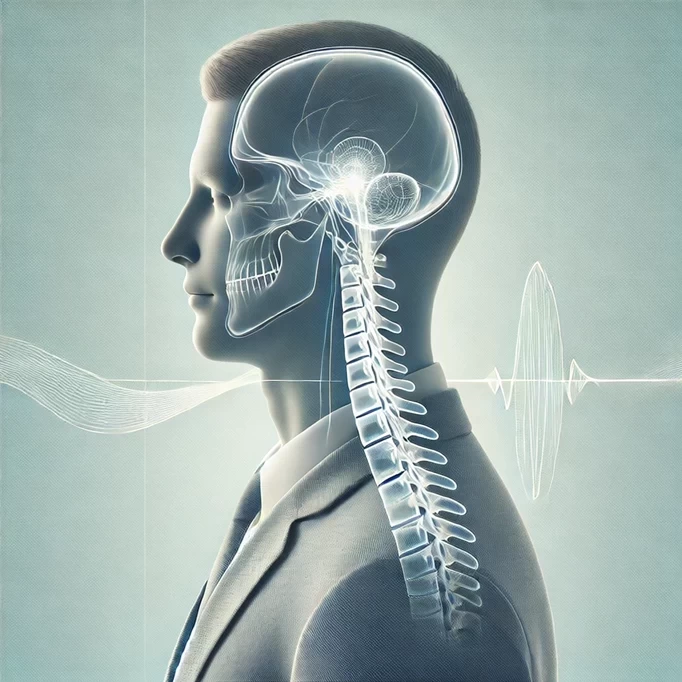How a Misaligned Atlas Impacts the Autonomic Nervous System
Hi everyone, I’m Dr. Reis from Atlas Specific Chiropractic in Hiawatha, IA. As an upper cervical chiropractor dedicated to serving Eastern Iowa, I’ve seen how subtle issues like a misaligned atlas can profoundly affect overall health, particularly the autonomic nervous system (ANS). The ANS regulates involuntary functions like heart rate, digestion, and stress responses, and when disrupted, it can lead to a cascade of symptoms. In this article, we’ll explore how a misaligned atlas impacts the autonomic nervous system, drawing on upper cervical chiropractic principles to explain the mechanisms and solutions. By focusing on atlas adjustments, we can address upper cervical misalignment for natural relief and restored balance. If you’re experiencing unexplained fatigue, anxiety, or digestive issues and searching for “natural treatment for autonomic nervous system disorders near me” or “upper cervical chiropractor in Iowa,” this insight into atlas vertebra misalignment could be key to your wellness journey.
By downloading the Digital Patient Chart mobile app you can better control your patient portal.
Understanding the Autonomic Nervous System: The Body's Silent Regulator
The autonomic nervous system is a vital component of our overall nervous system, controlling functions we don’t consciously think about, such as breathing, blood pressure, digestion, and the fight-or-flight response. It’s divided into two main branches: the sympathetic nervous system (which activates during stress, increasing heart rate and redirecting energy) and the parasympathetic nervous system (which promotes rest, digestion, and recovery). When balanced, the ANS ensures our body adapts seamlessly to daily demands. However, imbalances—known as dysautonomia—can lead to symptoms like rapid heartbeat, poor digestion, anxiety, or chronic fatigue.
In Iowa, where lifestyles range from demanding farm work to office-based roles, stress and physical strain often tip this balance. Factors like poor posture from long hours at a desk or repetitive motions in agriculture can contribute to upper cervical subluxation, indirectly affecting the ANS. The atlas vertebra (C1), the top bone in the spine, plays a crucial role here, as it supports the skull and protects the brainstem—a key ANS control center. When misaligned, it can disrupt this delicate system, leading to widespread health issues.
Dysautonomia isn’t always obvious; symptoms might mimic other conditions, making diagnosis tricky. Upper cervical chiropractic offers a unique lens, recognizing how atlas misalignment can pressure the brainstem or alter nerve signals, throwing the ANS off-kilter. Addressing this through precise atlas adjustments can restore harmony, providing natural treatment for autonomic nervous system imbalances without medications.
What is Atlas Misalignment and How Does It Occur?
The atlas vertebra, named after the mythical figure holding up the world, bears the weight of your head—about 10-12 pounds—and allows for its wide range of motion. Upper cervical misalignment, or subluxation, occurs when the atlas shifts out of position, often by mere millimeters. Common causes include trauma from car accidents, sports injuries, falls, or even birth processes. In everyday life, poor posture, repetitive stress, or emotional tension can gradually misalign this critical bone.
When the atlas misaligns, it doesn’t just affect the neck; it influences the entire spine and nervous system. The brainstem, housed within the upper cervical region, is particularly vulnerable. Misalignment can compress or irritate neural pathways, disrupting signals to the ANS. This interference might overstimulate the sympathetic branch, keeping the body in a constant “fight-or-flight” state, or suppress parasympathetic activity, hindering rest and recovery.
In Iowa’s variable climate, where cold winters tighten muscles and humid summers increase inflammation, such misalignments are exacerbated. Upper cervical subluxation can lead to a chain reaction: altered blood flow, restricted cerebrospinal fluid circulation, and imbalanced hormone release, all impacting ANS function. Recognizing these signs early—through symptoms like irregular heart rate or digestive woes—is essential for effective intervention via upper cervical chiropractic.
How a Misaligned Atlas Impacts the Autonomic Nervous System
A misaligned atlas directly influences the ANS by exerting pressure on the brainstem and spinal cord, where many autonomic pathways originate. The brainstem regulates vital functions, and even slight compression can disrupt sympathetic and parasympathetic signals. For instance, irritation here might heighten sympathetic activity, leading to chronic stress, elevated blood pressure, or anxiety—common in atlas misalignment anxiety cases.
This misalignment can also affect vascular flow, reducing blood supply to the brain and altering ANS control over circulation. In the parasympathetic realm, it may impair vagus nerve function, which governs digestion and relaxation, resulting in issues like IBS or poor sleep. Upper cervical misalignment often manifests as dysautonomia symptoms, including dizziness, fatigue, and poor focus, as the body struggles with imbalanced autonomic regulation.
For athletes or active Iowans, atlas subluxation can hinder performance by disrupting nervous system efficiency, slowing reaction times and recovery. Over time, this chronic imbalance contributes to broader health concerns, emphasizing the need for targeted upper cervical care to realign the atlas and restore ANS harmony.
The Role of Upper Cervical Chiropractic in Correcting Atlas Misalignment
Upper cervical chiropractic specializes in precise, gentle corrections to the atlas vertebra, using techniques like Atlas Orthogonal adjustments. At Atlas Specific Chiropractic, we begin with advanced digital X-rays to measure exact upper cervical misalignment, ensuring treatments are customized and effective.
Atlas adjustments involve a painless instrument that delivers a targeted impulse to realign the C1 vertebra, relieving brainstem pressure and enhancing nerve flow. This restoration balances the ANS, reducing sympathetic overdrive and boosting parasympathetic activity for better stress management and digestion. Unlike general chiropractic, our focus is exclusively on the upper cervical region, making it ideal for ANS-related issues.
In Hiawatha and surrounding areas, this approach provides natural treatment for autonomic nervous system disorders, often yielding improvements in symptoms like fatigue or anxiety after a few sessions. Regular maintenance helps prevent recurrences, supporting long-term wellness in Iowa’s demanding environment.
The Science and Evidence Behind Atlas Adjustments for ANS Health
Research supports the link between atlas misalignment and ANS dysfunction. Studies hypothesize that atlas subluxation complex (ASC) can cause dizziness and other autonomic symptoms, successfully addressed by upper cervical chiropractic. Evidence shows that restoring alignment rebalances the ANS, alleviating chronic stress from nerve irritation.
Clinical insights reveal that upper cervical misalignments disrupt brainstem function, leading to dysautonomia, with adjustments improving regulation. Further, misalignment influences nervous system via vascular flow, and corrections enhance overall autonomic balance. These findings affirm upper cervical chiropractic as an evidence-based method for addressing ANS impacts from atlas misalignment.
Benefits of Addressing Atlas Misalignment for ANS Balance
Correcting atlas misalignment offers numerous benefits for the ANS:
- Reduced Stress Response: Adjustments calm sympathetic overactivity, easing anxiety and promoting relaxation.
- Improved Digestion and Recovery: Enhanced parasympathetic function supports better gut health and sleep.
- Balanced Vital Signs: Stabilizes heart rate and blood pressure through restored nerve flow.
- Holistic Symptom Relief: Alleviates related issues like dizziness or fatigue from dysautonomia.
- Natural and Non-Invasive: Avoids medications, ideal for Iowans seeking sustainable wellness.
These advantages highlight why upper cervical care is essential for ANS health.
Lifestyle Tips to Support ANS Health and Atlas Alignment
Complement upper cervical adjustments with these habits:
- Posture Practices: Use ergonomic supports to maintain alignment and reduce ANS strain.
- Stress Reduction: Incorporate mindfulness or yoga to balance sympathetic and parasympathetic activity.
- Nutrition Focus: Eat anti-inflammatory foods to support nervous system function.
- Hydration and Sleep: Stay hydrated and prioritize rest for optimal ANS recovery.
- Gentle Exercise: Activities like walking enhance circulation without risking misalignment.
- Regular Check-Ups: Monitor for subluxations to prevent ANS disruptions.
These tips enhance chiropractic outcomes for autonomic balance.
Why Choose Atlas Specific Chiropractic for ANS Concerns
A misaligned atlas significantly impacts the autonomic nervous system, but upper cervical chiropractic provides a precise path to restoration. At Atlas Specific Chiropractic, we’re here to help Iowans achieve balanced health through atlas adjustments. Visit iowaatlasspecific.com or call our Hiawatha office for a consultation. Let’s realign your atlas and rejuvenate your ANS today.







Leave a comment